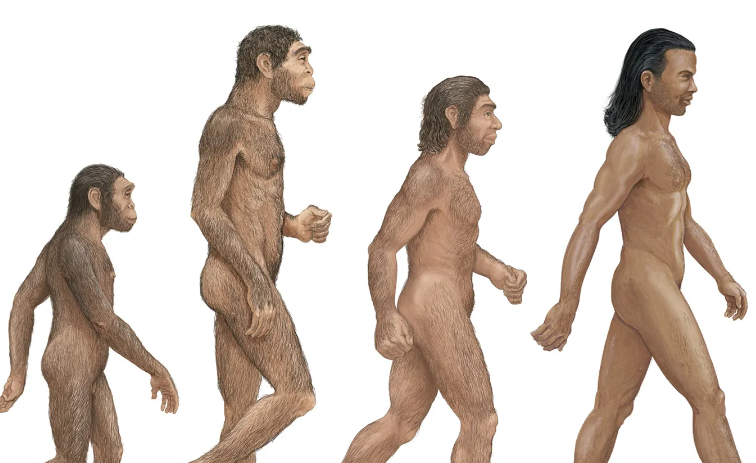This early Genus Homo had a larger braincase and smaller face and teeth than Australopithecus or older hominins. However, its large limbs and moderately pregnant face are ape-like.
This species was named ‘handyman’ in 1964 because it was assumed to be the first stone tool manufacturer. The oldest stone tools are more senior than Homo evidence.
History of Discovery
In 1960-1963, scientists Louis and Mary Leakey discovered the fossilized bones of an early human at Olduvai Gorge in Tanzania. Jonathan Leakey discovered OH 7, hence the “Jonny’s child” moniker. Louis Leakey, South African scientist Philip Tobias, and British scientist John Napier named these fossils Genus Homo (meaning ‘handy man’) because they believed this slightly larger-brained early human made the thousands of stone tools found at Olduvai Gorge.
Early Homo had smaller teeth than Australopithecus, but their thick tooth enamel and strong jaws allowed them to eat hard foods, probably only seasonally, when preferred foods were scarce. Dental microwear studies suggest that H. habilis could eat a wide range of foods, including more challenging foods like leaves, woody plants, and animal tissues, but did not regularly eat or specialize in hard foods like brittle nuts or seeds, dried meat, or very hard tubers.
Early cut- and percussion-marked bones from 2.6 million years ago support H. habilis’ nutrition. These indications of massive animal butchery, direct proof of meat and marrow eating, are widely attributed to the earliest emergence of Homo, including H. habilis.
Many scientists believe early Homo, including H. habilis, made and used the first stone tools found in the archaeological record, which date back to about 2.6 million years ago. However, several other early human species lived simultaneously and in the area where the earliest tool use was found.
Significant Fossil Finds
- Chimpanzee male, Pan troglodytes skull
- Timeline of fossil finds
In 1959, Louis and Mary Leakey discovered two teeth at Genus Homo in Tanzania, revealing Homo habilis. Next year, a boy’s skeleton was found, and further fossils were found.
Their brain size, hands and feet, and stone tool use revealed a new human progenitor. They were named new species in 1964, but their inclusion in Homo was disputed. The 1986 finding of an incomplete skeleton showed that this species was more ape-like than previously thought.
Important Specimens
Tim White discovered OH 62, a 1.8-million-year-old partial skeleton in Genus Homo, Tanzania, in 1986. Due to their diminutive stature, these remains are likely female. This incomplete skeleton has 302 fossilized tooth and bone pieces. Discovering this species’ arm, leg, and body proportions was crucial. These proportions showed that Homo habilis was more ape-like than thought. This person had long arms and tiny legs like apes.
Kamoya Kimeu found KNM-ER 1813, a 1.9-million-year-old skull, near Koobi Fora, East Turkana, Kenya 1973. The brain of this adult skull is 510 cubic centimeters, just over the average for Australopithecus species.
‘Twiggy’ OH 24 is a 1.8-million-year-old skull found by Peter Nzube in Genus Homo, Tanzania, in 1968. This crushed skull was rebuilt from hundreds of bits when found. It also demonstrates pre-fossilization bone deformation.
Cindy OH 13 is a 1.7-million-year-old lower jaw from Olduvai Gorge, Tanzania. This jaw was found with skull fragments and a lower arm bone.
Jonathan Leakey found ‘Jonny’s Child’ OH 7, a 1.8-million-year-old fragmentary skeleton in Olduvai Gorge, Tanzania, in 1960. This species’s ‘type specimen’ is this boy’s fragmentary skeleton.
OH 35—Olduvai Gorge, Tanzania, 1960 lower leg bones. These leg and OH 8-foot bones may be from the same person.
OH 8—1.8-million-year-old foot bones were found in 1960 in Tanzania’s Olduvai Gorge. This incomplete left foot lacks its heel and toe bones, but its arch and shape are similar to ours, proving that this species walked like a modern human.
Found in 1994 in Hadar, Ethiopia, AL 666-1 is a lower jaw Homo sp. (species uncertain). The human dental arch is in this jaw. Thus, it has been placed in the genus Homo, but its species is unknown. It may be Homo habilis or a new early human species. The oldest Homo directly related to stone tools is 2.3 million years old.
A 1.44-million-year-old right upper jaw bone, KNM-ER 42703, was found in Ileret, Kenya, 2000. The youngest Homo habilis fossil was recovered.
Lifestyle ‘Cro-magnon man’ skull
- How would we know their behavior?
- How they lived
Stone tools may have been made first by Genus Homo. This altered brain capacity and spurred new survival methods.
Mode 1 technology began with basic choppers, core tools, and scrapers 2.6 million years ago. Who made these early stone implements is still being determined. The tool makers may have been early Homo habilis or another species. AL 666-1, tentatively titled Homo sp., is one such contender.
Mode 1 uses core tools, choppers, and scrapers made of smaller flakes. The first Oldowan stone tools were found at Oldoway (now Olduvai) Gorge in Tanzania, east Africa. These primitive tools evolved from our oldest ancestors’ sticks and unaltered stones. The hammerstone struck the core to remove rock particles (flakes) to make the Oldowan tool chopping or cutting edges.
Also Read: WELLHEALTH HOW TO BUILD MUSCLE TAG 5 TIPS, NUTRITION, AND SUPPLEMENTATION
Questions Genus Homo
Homo sapiens appeared when?
Africa is where humans first arrived 300,000 years ago. Anatomically, modern humans emerged at this point, establishing our supremacy on Earth.
How did Genus Homo cope with different environments?
Homo erectus made tools for varied habitats, demonstrating flexibility. They survived better in different environments because they could manage fire.
Were Neanderthals Stronger Than Humans?
Yes, Neanderthals were strong and cold-adapted. However, Homo sapiens’ cognitive ability and social structures helped them succeed.
Was Genus Homo lingual?
Although evidence is scarce, Genus Homo may have had basic linguistic skills. Communication was essential to Homo evolution.
Does Genus Homo differ from other humans?
Symbolic thinking, complex language, and high cognitive powers set humans apart. These qualities distinguish us from other humans.
How Did Culture Help Genus Homo Dominate?
Cultural advancements like art, language, and intricate tools provided Genus Homo an edge. Cultural evolution was crucial to our adaptability and success.
Conclusion
As we end our investigation of the genus Homo, we marvel at how Homo sapiens became the dominating species on Earth. Evolutionary milestones, cultural achievements, and the adaptability of the genus Homo have molded our environment.

